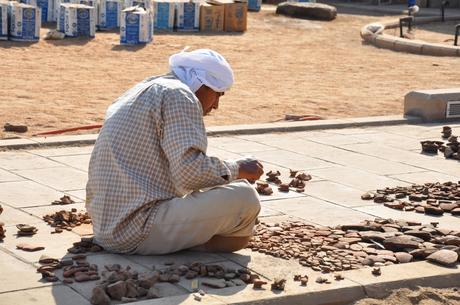
In my previous blog, I challenged the claim that Moses was a fictional character, a combination of various different characters from fictional mythology. The Usefulcharts YouTube channel claimed in their video that the archaeological evidence did not support the Biblical report of Israelites leaving Egypt, traveling around the desert for decades, till they eventually reached Canaan. I challenged that statement and I pointed out that a few relevant archaeological finds do exist. In this blog, I will list some more artefacts that support aspects of the Old Testament Exodus account.
Why do people claim the Old Testament as fiction? In the 1800’s, the school of higher criticism began to claim that the Old and New Testaments recorded fairy tales. The science of archeology had not begun at this point, so there was no physical evidence yet to pose a counter argument supporting the Bible. Today – that situation has changed. Archaeological digs are uncovering artefacts supporting many Biblical accounts. Titus Kennedy is a professional field archaeologist and adjunct professor at Biola University. He comments that:
“the degree of historical corroboration between the Bible and the artifacts that have been discovered over the last 150 years is startling, surpassing previous expectations and estimates, and continuing to astonish.”[1]
Titus Kennedy
Higher criticism has entered popular culture today. The Old Testament is viewed by people as fictional and mythological, right? Yet – archaeological digs are uncovering many artefacts from the Ancient Near East which confirm claims made in the Bible. This directly challenges the notion of a mythological Bible. The argument from silence that was made by the higher critics is being shown to be unsustainable. For example, to date the reality of 70 individuals mentioned in the Old Testament have been confirmed thru artifacts discovered by field archaeologists.[2]
Here are four discoveries that are relevant to the Moses account in the Bible:
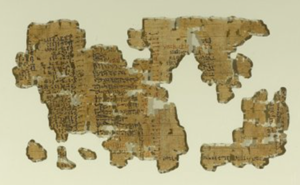
First – the Papyrus Brooklyn is dated 17th century BC. It contains the names of domestic servants, and some of the names are Hebrew. This supports the idea that Israelites lived in Egypt prior to the Exodus under Moses.[3]
Then the king of Egypt spoke to the Hebrew midwives, one of whom was named Shiphrah. (Exodus 1:15)
Check out Brooklyn Museum for more details.
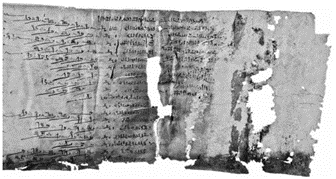
Second – Egyptian records show that the Egyptians used Semitic slaves to make bricks. The Louvre Leather Roll records the brick making quotas and potential penalties imposed on the slaves. The Leningrad Papyrus 1116A and a wall painting found in the Valley of the Nobles in Egypt show compulsory labor on public building projects.[4]
You are no longer to give the people straw to make brick as previously; let them go and gather straw for themselves. But the quota of bricks which they were making previously, you shall impose on them. (Exodus 5:7-8)
For more, refer to Leather Scroll: Quota for Brick-making, 1274 BCE : Center for Online Judaic Studies (cojs.org).
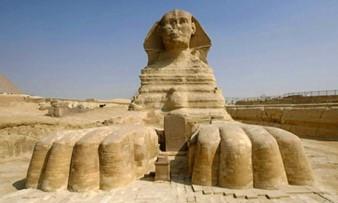
Third – the Dream Stele. An inscription was found between the paws of the Great Sphynx in Egypt. This text was from Pharaoh Thutmose IV, son if Pharoah Amenhotep II. Thutmose IV was not the natural heir to the throne due to the death of his brother, Amenhotep II’s first born son. The cause of death is not recorded in Egyptian documents. But Thutmose IV fabricates a divine promise to solidify his legitimacy as Pharaoh.[5]
You can find a translation of the Dream Stele here – Dream Stele (Sphinx Stela) | Ancient Egypt Online.
If Amenhotep II was the Pharaoh during the Exodus, his eldest son would have died during the final plague on Egypt.
[Yahweh] struck all the firstborn in the land of Egypt, from the firstborn of Pharaoh who sat on his throne to the firstborn of the captive who was in the dungeon. (Exodus 12:29)
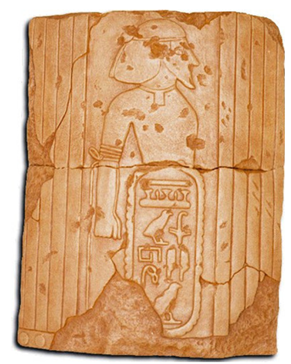
Four – the Nomads of YHWH. In Sudan, two Egyptian temples contain reference to the “lands of the nomads of YHWH.” They are the earliest known references to Yahweh, the name of God in the Old Testament. They describe nomadic people living in the wilderness east of Egypt who were enemies of Egypt. They lived in tents. Surely, they nomads must have been living like that for a considerable period for the Egyptians to record their existence? The inscriptions are dated to Late Bronze Age, 1300 BC.[6]
For more, refer to Three Egyptian Inscriptions About Israel – Bible Archaeology Report.
The only ancients known to worship Yahweh were the Israelites, so it follows that these nomads were the Israelites prior to their settlement in Canaan after their Exodus from Egypt. The inscriptions show the Egyptians knew about them.
[Yahweh’s] anger burned against Israel, and He made them wander in the wilderness forty years. (Numbers 32:13)
Conclusion
Sure. It is easy to claim the Old Testament is fiction, but it’s becoming harder to justify that claim. If we think that, then we are ignoring an increasing amount of physical evidence that continues to be found today suggesting otherwise. While it is hard to line up an exact timeline, and difficult to match Egyptian and Israelite texts, the physical artefacts suggest a connection exists between them. They record the same events and peoples. Artefacts cannot by dismissed as mythology or propaganda. These and many more artefacts support the historicity of Old Testament accounts like the Exodus from Egypt.
[1] Titus Kennedy, Unearthing the Bible 101 Archaeological Discoveries that Bring the Bible to Life, (Eugene: Harvest House Publishers, 2020), 239.
[2] Ibid., 238.
[3] Ibid., 48-49.
[4] Ibid., 50-51.
[5] Ibid., 58-59.
[6] Ibid., 60-61.
